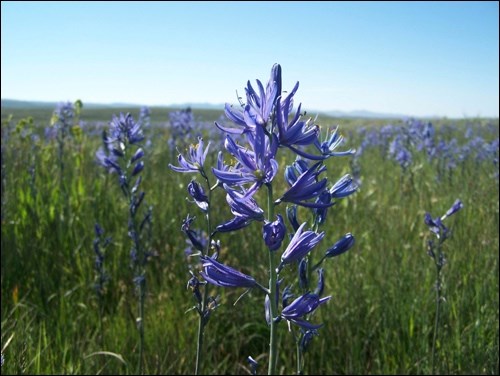Most gardeners, at some point, start to dabble with bulbs. Lilies, hyacinths, alliums and tulips are just a few well-known bulbs. Really keen gardeners differentiate between "true bulbs" and bulb-like structures such as corms and rhizomes and tubers. However you refer to them, there are several bulbs that are little known but worthy of far wider trials in our gardens.
Many bulbs appear, flower madly and then immediately go dormant, thus leaving you with a gap in the border that may be unsightly or difficult to hide. Also, garden centers have difficulty selling plants if they are not in bloom at that moment. Few bulbous plants flower continually and so some people feel they are "undesirable" (those people are wrong).
Over the years, I have become especially drawn to the more unusual bulbs and so have amassed a small collection of gems and wonders. Alliums, which are really just ornamental onions, have been popular in gardens for years but there are rarely more than a dozen kinds at your local garden center, and that's if you're lucky. I am amazed at the number of gardeners who are unaware of the almost astonishing diversity found here, and the vast array of sizes, colors and shapes that they take. There are beautiful alliums like Allium cyaneum with blue flowers that rival anything monkshood or delphinium can do. There is the beautiful Prairie native nodding onion (Allium cernuum) – rarely grown here but loved in Britain. Or what about Allium karataviense from the high mountains of Pakistan? It has big, strappy leaves and milky white blooms held low to the ground. It smells of cheap bubblegum and multiplies where it is happy.
Blue camas (Camassia quamash) is most often associated with Garry oak meadows in the south of Vancouver Island, but this lovely bulb is quite hardy and now naturalized in southern Alberta. Once an important food source for First Nation people, blue camas goes dormant quickly after blooming but multiplies freely in a moist, sunny site. There are few flowering bulbs that can compete with it for elegance and sophistication.
Some of the more tender bulbs are also worth playing with. The giant lily (Cardiocrinum giganteum) is widely considered the largest lily in the world and to say it's spectacular would be a dramatic understatement. With its blood stained white trumpets, haunting fragrance and shining, heart-shaped leaves it is unlike anything else in its family, to say nothing of the fact that it can reach nine feet in height. While it has to be carefully wintered indoors, for the adventurous gardener who likes a little magic, this is an incomparable specimen.
Finding these plants is part of the thrill. Growing something that your gardening friends don't have is always an occasion for joy (and a little bit of smugness), and it keeps our gardens interesting. I search through seed catalogues, Internet resources, botanical gardens, seed exchanges, greenhouses and other sources and I'm always looking for that little bit something unusual. I never pay any attention to zone ratings (they are usually ridiculous), but instead look at its native range. Cold parts of Europe, Asia or North America? I'll give that a try. From the jungles of Sumatra? Maybe that would be best indoors.
To learn more about Mysterious Bulbs, join Lyndon on April 18 at the University of Saskatchewan. He will also be leading other workshops in April (Spring 101, Advanced Gardening, Antique Vegetables, Prairie Herbs and Spices, Ancient Chinese Gardens). See http://gardening.usask.ca, email [email protected] or call 306-966-5546 for more information or to register for these and other horticulture classes.
Lyndon Penner is an avid blogger (www.jadecypress.wordpress.com), frequent CBC radio contributor and more recently author with Prairie Short Season Yard and *NEW* Garden Design for the Short Season Yard
— This column is provided courtesy of the Saskatchewan Perennial Society (www.saskperennial.ca; [email protected]). Check out our Bulletin Board or Calendar for upcoming garden information sessions.




